Table Linen
(1186 products)
Related Categories
Bath Mats
Bath Rugs
Bath Towels
Bathrobe
Bed Linen
Bed Sheets & Covers
Bedding Set
Bedspreads
Blankets
Carpets
Coir Carpets
Coir Mats
Coir Mattress
Coir Rugs
Cotton Towels
Curtain Fittings
Curtains
Cushion Covers
Door Mats
Durries
Duvet Covers
Fleece Blankets
Floor Mats
Foam,Rexine & PU Products
Hand Knotted Carpets
Hand Knotted Rugs
Hand Tufted Carpets
Hand Tufted Rugs
Handkerchief
Handmade Carpets
Handmade Rugs
Home Decor Items
Home Furnishing Accessories
Home Furnishing Fabric
Home Furnishings
Jute Carpets
Jute Rugs
Kitchen Aprons
Kitchen Linens
Kitchen Towels
Mattress
Mosquito Nets
Napkins
Pillow & Covers
Quilts
Rugs & Mats
Sofa Covers
Table Cloths and Runners
Table Linen
Table Mats
Terry Towels
Towels
Upholstery Textile
Window Blinds
Window Curtains
Wool Carpet
Explore More Categories
Pot Holder
Business Type: Manufacturer | Supplier
BICA INDUS
Designer Table Linen
Business Type: Manufacturer | Distributor
AMSA EXPORTS
ROUND TABLE LINEN
Business Type: Manufacturer | Exporter
Parameshwari Exports Pvt Ltd
TABLE LINEN
Business Type: Manufacturer | Distributor
PADMAVATHI HANDICRAFTS
Verified Exporter
( Accepts only Foreign Inquiry)
Linen Tablecloth
Price Trend: 300.00 - 450.00 INR (Approx.)/Piece
MOQ - 10 Piece/Pieces
Use - Home, Hotel, Wedding, Restaurant, Bedding, Other
Feature - Washable, Quick Dry
Thread Count - 150
8 Years
Business Type: Manufacturer | Distributor
CRAFTOLA INTERNATIONAL
Natural Braided Jute And Cotton Table Runner
Price: 500 INR (Approx.)/Piece
MOQ - 500 Piece/Pieces
Feature - Disposable, Water Absorption
Use - Restaurant, Home, Home Textile
Color - Natural
4 Years
Business Type: Manufacturer | Exporter
J.C. INTERNATIONAL
Metal Gold Plated Chalice
Price Trend: 1000.00 - 5000.00 (Approx.)/Piece
MOQ - 20 Piece/Pieces
Material - Metal
Size - 8 inches
6 Years
Business Type: Manufacturer | Distributor
SUNRAYS IMPEX
Multicoloured Fancy Beads Placemat
Price: 300 INR (Approx.)/Piece
MOQ - 10 Piece/Pieces
Feature - Other
Yarn Type - Other
Material - 100% Polyester
2 Years
Business Type: Manufacturer | Supplier
MKS INDIA
Cotton Table Linen
Business Type: Manufacturer | Supplier
RISONI
Blue And White Embroidered Table Linen
Price Trend: 200.00 - 2000.00 INR (Approx.)/Square Foot
MOQ - 1000 Square Foot/Square Foots
Yarn Type - Linen , Other
Use - Home Textile, Restaurant, Wedding, Hotel, Home
Material - 100% Cotton
Business Type: Manufacturer | Distributor
VIMLA HANDICRAFTS
Round Shape White Printed 100% Cotton Table Linen Density: 5.5 To 6.5 Gm Gram Per Cubic Centimeter(G/Cm3)
Price: 420 INR (Approx.)/Piece
MOQ - 100 Piece/Pieces
Use - Home
Width - 48 Inch (in)
Yarn Type - Untwisted
Business Type: Distributor
Dakshin Fashions
White Plain Dyed Square Polyester Table Linen
Price: 140 INR (Approx.)/Piece
MOQ - 300 Piece/Pieces
Width - 132.1 Centimeter (cm)
Feature - Washable, Other, Quick Dry
Use - Hotel, Home, Restaurant, Other
Business Type: Manufacturer
Anjali Trader
Green And Red Table Cloths
Business Type: Manufacturer | Exporter
LORDS WEAR PVT. LTD.
All Table Linen
Price: 549 INR (Approx.)/Piece
MOQ - 2 Piece/Pieces
Use - Home, Hotel
Feature - Washable
Width - 40 Inch (in)
4 Years
Business Type: Manufacturer | Supplier
HOME ZONE INDIA
Acacia Table Linen
Business Type: Manufacturer | Distributor
Acacia Fashions Pvt. Ltd.
Verified Exporter
( Accepts only Foreign Inquiry)
tooling fixture and table
Business Type: Manufacturer
V One Industries India Pvt Ltd
MAA BHAGWATI Table Linen
Business Type: Manufacturer | Exporter
MAA BHAGWATI TEXTILES
Anti Shrink Plain Linen Fabric
Price: 100 INR (Approx.)/Meter
MOQ - 200 Meter/Meters
Feature - Shrink Resistant
Pattern - Plain Dyed
Color - MULTICOLOR
Business Type: Manufacturer
Naaz Handloom
Table Covers
Business Type: Manufacturer | Supplier
ARJUN EXPORTS
Piramid Table Linen
Business Type: Manufacturer
Piramid Textiles Pvt.Ltd.
A-TEX Table Linen
Business Type: Manufacturer | Distributor
A-TEX HOME COLLECTION
Quick Dry Multi Colored Table Linen
Feature - Quick Dry
Use - Hotel, Restaurant, Home, Other
Pattern - Printed
Business Type: Manufacturer | Trading Company
SHILPA MANMOHAN
Aiswarya Table Linen
Business Type: Manufacturer | Supplier
Aiswarya Textiles Mills
Table Linens
Business Type: Manufacturer | Distributor
ASEKA EXPORT
Table Linen Manufacturers | Suppliers in India
| Company Name | Location | Member Since |
|---|---|---|
| Craftola International | Jaipur, India | 8 Years |
| Sunrays Impex | Madurai, India | 6 Years |
| Linen Design Company Pvt. Ltd. | Gurugram, India | 5 Years |
| Sri Kalyan Export Pvt Ltd. | Erode, India | 4 Years |
| J.C. International | Panipat, India | 4 Years |
| Keshav International | Panipat, India | 4 Years |
| Home Zone India | Panipat, India | 4 Years |
| Mks India | New Delhi, India | 2 Years |
What is Linen?
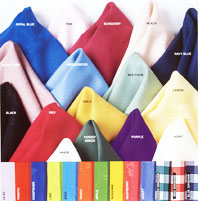 Linen is a material made from the fibers of flax. Linen yarn is spun from the long fibers found just behind the bark in the multi-layer stem of the flax plant.
Linen is a material made from the fibers of flax. Linen yarn is spun from the long fibers found just behind the bark in the multi-layer stem of the flax plant.The quality of the finished linen product is dependent upon growing conditions and harvesting techniques.
What is Table Linen?
Linen fabric used as a cover for dining tables, study tables, display tables, etc. is called table linen. In earlier times, table linens were used as a sign of royalty and the poor people had no linens or even tables. But today, table linen is used as a common decorative cover for tables.
Raw Material of Linen
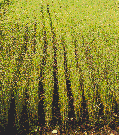 Flax is the raw material of linen grown as an annual spring crop grown both for its fiber and its seed. The stem of the fiber plant is slender and tall ranging from 25 to 125 cm in length in sparsely and heavily branched varieties depending on the regional conditions and climate. The fibre consists of the skin surrounding the woody core of the stem. The period of growth is about 90 days and the flax is pulled when the seeds begin to brown.
Flax is the raw material of linen grown as an annual spring crop grown both for its fiber and its seed. The stem of the fiber plant is slender and tall ranging from 25 to 125 cm in length in sparsely and heavily branched varieties depending on the regional conditions and climate. The fibre consists of the skin surrounding the woody core of the stem. The period of growth is about 90 days and the flax is pulled when the seeds begin to brown.There are over 200 varieties of flax plants, which is cultivated on primarily silt or clay loams in a moist and warm climate. It is traditionally grown in no more than twenty countries worldwide.
The largest flax-growing country is Soviet Russia, which produces approximately 90 percent of the total flax crop of the world. Today flax is an expensive fiber and produced only in small quantities.
Pulling of Flax
 The flax crop is either hand-harvested by pulling up the entire plant or stalks are cut very close to the root. It is very carefully harvest for valuable fibre would also be lost by the slightest injury. There are mechanical pulling machines but these are only applicable where the fields are large and in districts where the harvest is early and not subject to the August rains.
The flax crop is either hand-harvested by pulling up the entire plant or stalks are cut very close to the root. It is very carefully harvest for valuable fibre would also be lost by the slightest injury. There are mechanical pulling machines but these are only applicable where the fields are large and in districts where the harvest is early and not subject to the August rains.Characteristics of Linen
|
Linen is one of the oldest textile materials in the world the history of which goes back many thousands of years. Traces of linen thread dates back to the Neolithic times in Switzerland and the Bronze Age in Spain. Fragments of straw, seeds, fibres, yarns and various types of fabrics which date back to about 8000 B.C. have been found in Swiss lake dwellings. Linen was used in the Mediterranean in the pre-Christian age and as currency in ancient Egypt. Egyptian mummies were wrapped in linen, which was seen as a symbol of light and purity, and as a display of wealth. The finest linen cloths were spun as far back as 3,000 - 4,000 years B.C. in Mesopotamia, Assyria and Egypt.
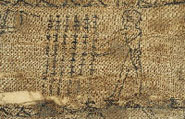 The ancient historian Herodotus mentions linen cloths where each thread consisted of 360 finest strands presented as a gift to Athena of Rhodos. Egyptian priests wore clothes made of linen that symbolized purity of light and fidelity. Linen was used to make clothes, combat outfits, bed wrappers, sailcloth and cordage and as canvas in painting in Greece that dates back to the 6th century BC. Ancient manuscripts of the 9th-10th century B.C. contain evidence of linen made by Slavs in Russia.
The ancient historian Herodotus mentions linen cloths where each thread consisted of 360 finest strands presented as a gift to Athena of Rhodos. Egyptian priests wore clothes made of linen that symbolized purity of light and fidelity. Linen was used to make clothes, combat outfits, bed wrappers, sailcloth and cordage and as canvas in painting in Greece that dates back to the 6th century BC. Ancient manuscripts of the 9th-10th century B.C. contain evidence of linen made by Slavs in Russia. The famous Turin Shroud that bears the image of Jesus Christ and was used to wrap his body is of linen. Even the towel bearing Christ's image, Redeemer, not painted by human hands, was also made of linen.
Prior to the invention of paper, writers penned down their manuscripts on linen.
History of Table Linen
Table linen was used during earlier times mainly by the royal and elite class. Gradually with the passage of time, and with the advancement of technology, this valuable fiber fabric began to be used by the common people.
|
 Today blended table linen with cotton, polyester, jacquard, and other fabrics have been introduced in the market. Along with domestic use, table linen began to be used for commercial purposes. They are now available in various colors, patterns and embroidered varieties were designed and woven.
Today blended table linen with cotton, polyester, jacquard, and other fabrics have been introduced in the market. Along with domestic use, table linen began to be used for commercial purposes. They are now available in various colors, patterns and embroidered varieties were designed and woven.Application of Linen
Traditionally linen was widely used for towels, sheets, lightweight undergarments such as shirts, chemises, waist shirts, lingerie, and detachable shirt collars and cuffs. Today linen has wide application in the following areas:
|
Related Categories
Related Categories
Bath Mats
Bath Rugs
Bath Towels
Bathrobe
Bed Linen
Bed Sheets & Covers
Bedding Set
Bedspreads
Blankets
Carpets
Coir Carpets
Coir Mats
Coir Mattress
Coir Rugs
Cotton Towels
Curtain Fittings
Curtains
Cushion Covers
Door Mats
Durries
Duvet Covers
Fleece Blankets
Floor Mats
Foam,Rexine & PU Products
Hand Knotted Carpets
Hand Knotted Rugs
Hand Tufted Carpets
Hand Tufted Rugs
Handkerchief
Handmade Carpets
Handmade Rugs
Home Decor Items
Home Furnishing Accessories
Home Furnishing Fabric
Home Furnishings
Jute Carpets
Jute Rugs
Kitchen Aprons
Kitchen Linens
Kitchen Towels
Mattress
Mosquito Nets
Napkins
Pillow & Covers
Quilts
Rugs & Mats
Sofa Covers
Table Cloths and Runners
Table Linen
Table Mats
Terry Towels
Towels
Upholstery Textile
Window Blinds
Window Curtains
Wool Carpet
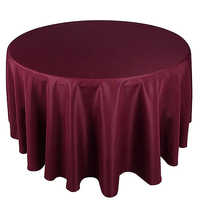
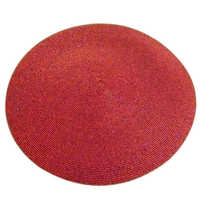
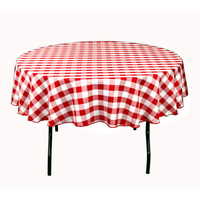
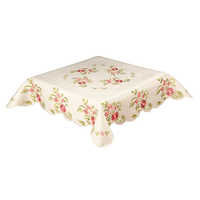
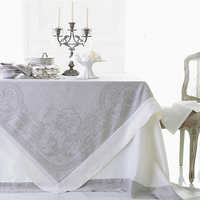
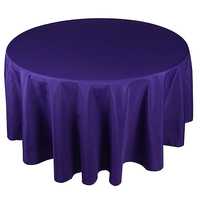
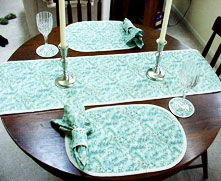 When adequately prepared, linen has the ability to absorb and lose water rapidly
When adequately prepared, linen has the ability to absorb and lose water rapidly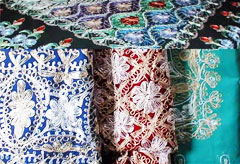 Venetian style and Damascus (damask linen) weave came into existence during the Renaissance period
Venetian style and Damascus (damask linen) weave came into existence during the Renaissance period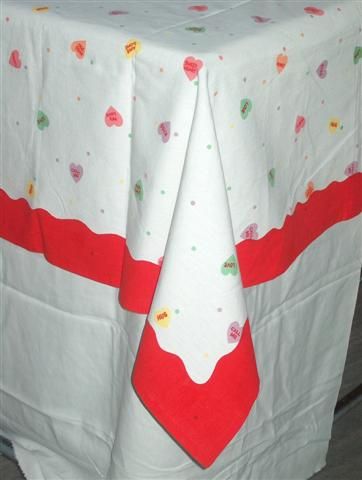 It is used as household textiles, interior furnishings, textile wallpaper and wall coverings
It is used as household textiles, interior furnishings, textile wallpaper and wall coverings